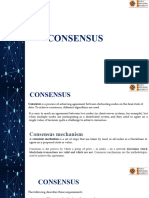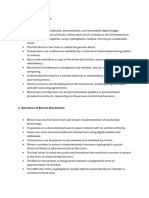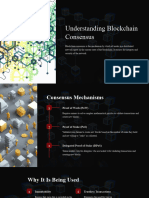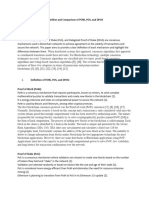0% found this document useful (0 votes)
44 views11 pagesBlockchain Consensus Algorithms
Consensus in blockchain is the process by which all nodes agree on the state of the blockchain, ensuring data validity and preventing fraud. Various consensus algorithms exist, including Proof of Work, Proof of Stake, and Byzantine Fault Tolerance, each with its own advantages and disadvantages. The future of consensus mechanisms includes trends towards hybrid models, scalability, enhanced security, and sustainability.
Uploaded by
nehavinod13Copyright
© © All Rights Reserved
We take content rights seriously. If you suspect this is your content, claim it here.
Available Formats
Download as PDF, TXT or read online on Scribd
0% found this document useful (0 votes)
44 views11 pagesBlockchain Consensus Algorithms
Consensus in blockchain is the process by which all nodes agree on the state of the blockchain, ensuring data validity and preventing fraud. Various consensus algorithms exist, including Proof of Work, Proof of Stake, and Byzantine Fault Tolerance, each with its own advantages and disadvantages. The future of consensus mechanisms includes trends towards hybrid models, scalability, enhanced security, and sustainability.
Uploaded by
nehavinod13Copyright
© © All Rights Reserved
We take content rights seriously. If you suspect this is your content, claim it here.
Available Formats
Download as PDF, TXT or read online on Scribd
/ 11




























































